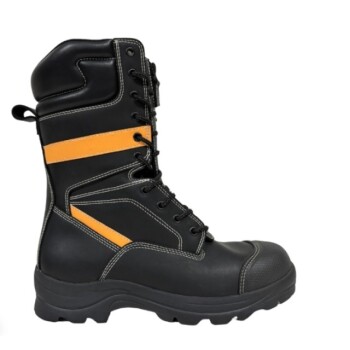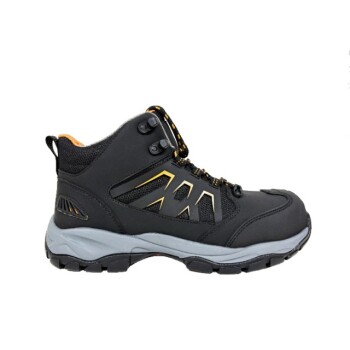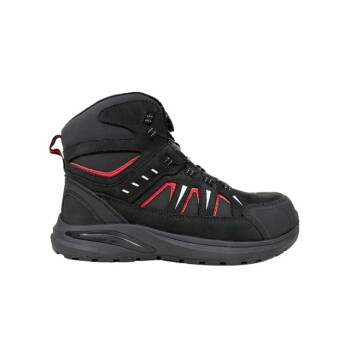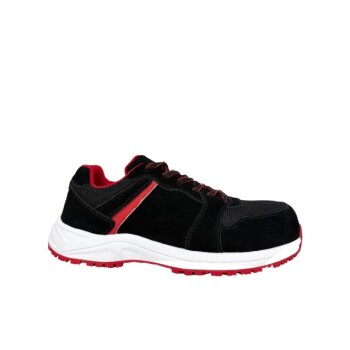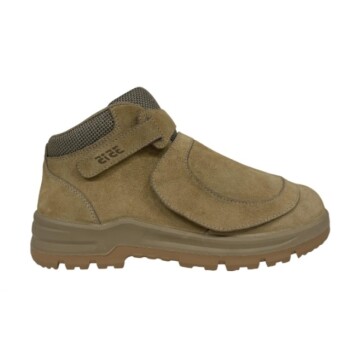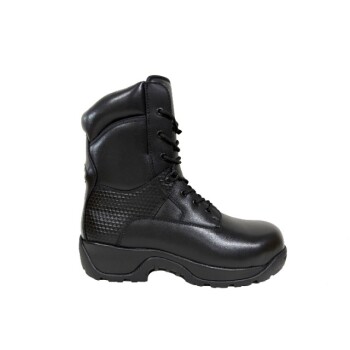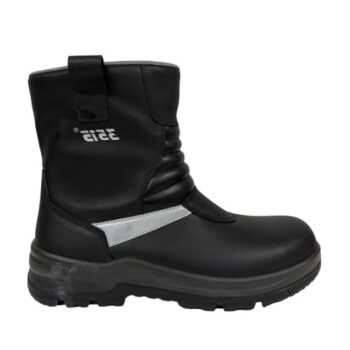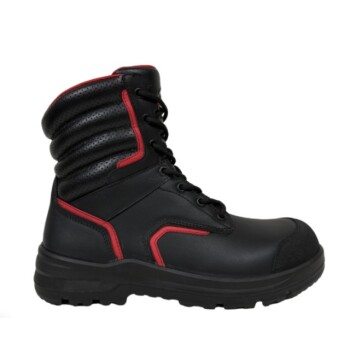It's a common and frustrating problem. Your safety shoes cause foot pain because their core design principle—unyielding protection—is in direct conflict with the natural, flexible movement of your feet. The rigid materials required to shield you from impact and puncture severely restrict the complex mechanics of your feet and joints, leading to strain and discomfort.
The fundamental issue is a trade-off: standard safety footwear prioritizes impenetrable safety over ergonomic design. This forces your foot to conform to a rigid box, rather than allowing the shoe to work with your foot's natural motion.
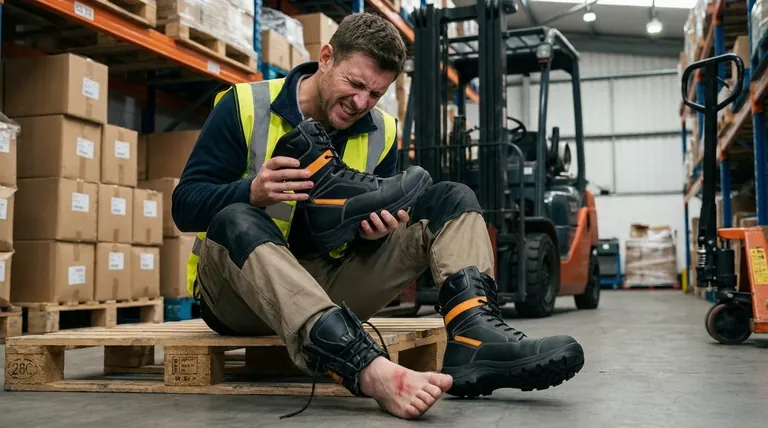
The Core Conflict: Protection vs. Natural Mechanics
To understand the source of the pain, you first have to appreciate the job your feet are trying to do. This context reveals why the rigid environment of a safety shoe is so challenging.
How Your Feet Are Designed to Move
Your foot is a complex structure of bones, ligaments, and tendons designed for adaptation and shock absorption. With every step, your arch flexes, your toes splay to provide a stable base, and your ankle joint articulates to navigate terrain. This natural movement is essential for distributing pressure and preventing fatigue.
How Safety Shoes Restrict That Movement
Safety shoes are, by necessity, built with stiff, unyielding materials. A reinforced toe cap, a puncture-resistant shank, and a thick outsole create a protective shell. This shell prevents your foot from flexing, your arch from compressing naturally, and your toes from spreading out as you bear weight.
Deconstructing the Pain Points in a Safety Shoe
Specific components of the shoe are directly responsible for common types of foot pain. Identifying them can help you diagnose your specific issue.
The Reinforced Toe Cap
The steel or composite toe cap is the most recognized safety feature, but it's also a primary source of discomfort. It creates a fixed, hard ceiling over your toes, preventing them from extending or splaying. This can lead to bruised toenails, hammertoes, and painful pressure on the joints.
The Rigid Midsole and Shank
A puncture-resistant plate or a steel shank is often embedded in the midsole to protect against sharp objects from below. This makes the shoe incredibly stiff, turning the simple act of walking into a rocking motion rather than a natural, flexible step. This rigidity puts immense strain on your plantar fascia, the ligament that runs along the bottom of your foot, often causing heel and arch pain.
The Heavy, Inflexible Outsole
The outsoles on safety footwear are thick and durable for traction and longevity. However, this adds significant weight and further reduces flexibility. The constant effort required to lift and move these heavy, clunky shoes leads directly to muscle fatigue in your feet, calves, and even your lower back.
Common Pitfalls and Contributing Factors
While the shoe's design is the primary culprit, several other factors can significantly worsen the pain.
The Myth of the "Break-In" Period
Many believe a painful safety shoe just needs to be "broken in." While the leather upper may soften slightly over time, the fundamental structural issues—the rigid sole, the narrow toe box—will not change. Pain from a poor fit is a signal that should not be ignored.
Incorrect Sizing and Fit
This is the single most common and avoidable mistake. Many people buy safety shoes in the same size as their sneakers, failing to account for the lack of "give" in the materials. A shoe that is too short or too narrow will relentlessly compress your foot, guaranteeing pain.
Inadequate Arch Support
The stock insoles provided with most safety shoes are simple foam placeholders offering little to no real support. Without proper arch support, your foot can over-pronate (roll inward), leading to a cascade of strain on your ankles, knees, and hips.
Making the Right Choice for Your Goal
Understanding the cause of your pain empowers you to find a better solution. Your next steps depend on your most immediate need.
- If your primary focus is immediate relief in your current shoes: Replace the factory insoles with high-quality, supportive orthotic insoles that match your arch type.
- If your primary focus is finding a better-fitting boot: Get your feet professionally measured at the end of the day (when they are most swollen) and prioritize brands known for offering wider toe box options.
- If your primary focus is long-term comfort and safety: Explore modern safety footwear that uses lighter composite materials and more ergonomic designs to provide protection with increased flexibility.
Ultimately, you should not have to choose between being safe and being pain-free.
Summary Table:
| Pain Point | Cause in Safety Shoe | Potential Solution |
|---|---|---|
| Toe Pain / Bruised Nails | Rigid toe cap restricts toe movement | Choose a wider toe box or composite toe cap |
| Arch / Heel Pain | Rigid midsole and shank strain plantar fascia | Use supportive orthotic insoles |
| Muscle Fatigue | Heavy, inflexible outsole adds weight | Opt for lighter composite materials |
| General Discomfort | Incorrect sizing and poor arch support | Get professionally fitted and replace stock insoles |
Stop choosing between safety and comfort. As a large-scale manufacturer, 3515 produces a comprehensive range of ergonomic safety footwear designed to protect without the pain. We combine advanced composite materials with ergonomic designs to offer superior flexibility and support for distributors, brand owners, and bulk clients. Let us help you find or create the perfect safety shoe solution for your workforce. Contact our experts today to discuss your needs.
Visual Guide

Related Products
- Premium Flame-Retardant Waterproof Safety Boots and Shoes
- Premium Sport Style Safety Boots for Bulk Orders
- Heavy Duty Nubuck Safety Boots Safety Shoes for Global Distribution
- Advanced KPU Athletic Safety Shoe with Steel Toe Cap Anti-Slip Rotary Lacing System
- Safety Footwear Wholesale Manufacturer for Custom OEM/ODM Production
People Also Ask
- What features make oilfield safety shoes resistant to heat and flames? Protect Against Extreme Temperatures
- What are the advantages of rubber soles in safety boots? Unbeatable Grip & Durability
- What are the signs that safety toe boots are worn out and need replacement? Ensure Your Workplace Safety
- How do some boots combine materials for better performance? Achieve Superior Safety & Comfort
- How does repeated exposure to high temperatures damage safety boots? Avoid Costly Structural Failures
